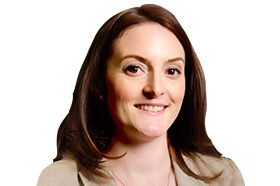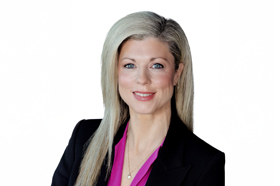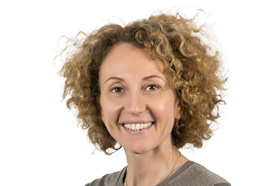Executive summary
As the first wave of Corporate Sustainability Reporting Directive (CSRD) reporters submit their disclosures, future reporters confront a two-year delay and a choice: pause or press on. By applying Wave 1 learnings now — closing governance gaps, improving data quality and building assurance readiness — companies can use the delay to their strategic advantage.
A pause in policy, not in pressure
In April, the EU approved a two-year delay to CSRD’s application for many companies. While this created breathing room for companies in Waves 2 and 3, it also introduced a new risk: that those companies could lose momentum, leadership engagement and sustainability talent — just when they need it most.
In a recent webcast, Grant Thornton leaders from France and Ireland — moderated by Grant Thornton U.S. Managing Director of Environmental, Social & Governance (ESG) & Sustainability Marjorie Whittaker — shared insights from guiding early adopters through the first wave of CSRD disclosures, and how companies can use this window to prepare with intention.
Panelists agreed that the Omnibus delay presents an opportunity for Wave 2 and 3 reporting entities to strategically phase their preparation activities — helping manage pressure on internal teams and external resources while also controlling costs. By spreading out the workload, companies can avoid the higher costs often associated with last-minute consulting, rushed audits or emergency tooling. It also allows for smarter budgeting: organizations can phase investments in systems, training and assurance over multiple quarters, rather than absorbing them all at once.
Additionally, while more companies are working under extended timelines, stakeholder scrutiny hasn't paused. “Their financiers and investors still want to understand the risk of the company they’re dealing with,” said Janice Daly, Grant Thornton Ireland Sustainability Advisory Partner.
Many global companies are also navigating multiple disclosure requirements and using CSRD preparation to address overlap. For example, California’s climate disclosure rules share similar expectations around climate risk, greenhouse gas data and assurance. By taking a cross-functional approach now, companies can streamline future compliance efforts across multiple jurisdictions while advancing their business goals and meeting stakeholder expectations.
Four lessons from Wave 1 filers
- Governance must be cross-functional
An overwhelming majority of respondents to the Sustainability Today webcast survey said they plan to focus on internal awareness in the next 12 months. That’s a positive sign. As Vincent Frambourt, Grant Thornton France Audit Partner and National Director of Sustainable Transformation, shared, one of the biggest challenges in the Wave 1 CSRD assurance process has been internal collaboration.
“Every team — from HR to IT to procurement — has to be made aware of how their operations impact CSRD reporting and the data they need to collect,” Frambourt said. “Everyone needs to understand their role and responsibilities and be held accountable to them.”
Board engagement is also critical. Panelists observed that, initially in the reporting process, many directors viewed CSRD as outside their scope of ownership. That changed quickly when they realized disclosures were shaping investor sentiment.
“Now, they understand it is their responsibility,” said Hillaireau, highlighting directors’ focus on data quality. “They have to make decisions based on ESG data, so they need strong and robust data.”
For companies subject to multiple requirements, this alignment must extend across jurisdictions. The earlier reporting calendars and ownership structures are aligned, the fewer surprises arise at audit time.
It’s also important to align CSRD reporting cadence with the company’s financial cycles. While finance teams are accustomed to strict timelines, sustainability teams may not be — especially given the volume and depth of disclosure required for CSRD reporting.
“CSRD requires much more information to be produced, so you need to be prepared so that financial reports and ESG reports are created within the right timeframes,” Frambourt said.
- Set expectations through targeted training
Cross-functional alignment only works when people understand their roles. Frambourt emphasized the importance of tailoring training for CSRD preparation by level.
“Your board, your managing directors and your contributors all have different levels of expertise and knowledge on the skills required for reporting,” Frambourt explained. “It’s critical for leaders to be equipped on key deliverables and for contributors to have a clear understanding of expectations, their exact data requirements and the timing.”
- Lead times are longer than you think
CSRD reports vary widely in length depending on company size and scope. On average, Frambourt observed reports ranging from 150 to 350 pages. They include both narrative and quantitative disclosures, each requiring significant time, coordination and review.
“Many companies have underestimated the lead time they need to build and to write their report,” he said, noting that this is especially true for organizations where ESG reporting wasn’t previously subject to external audit. Drafting narratives, validating key performance indicators (KPIs) aligning stakeholder input and securing internal approvals are all tasks that require months of planning.
- Data must be both credible and connected
Wave 1 companies quickly discovered that data quality and internal consistency were among their biggest hurdles, according to panelists.
“From the work that we did with the Wave 1 reporters, what became very apparent was the quality of the data and internal controls that exist around that data,” Daly said.
She emphasized the importance of data provenance — understanding the origin of data, how it is collected and how it moves through systems — as well as ensuring internal consistency across all reported disclosures.
"In your CSRD and California climate reports, are you saying the same thing about climate risk?” she asked. “Could an analyst review your sustainability statement and recognize your company in it versus what they have read in your other disclosures?”
By taking full advantage of the two-year delay to validate their sustainability data and processes, Daly said, “You won’t be trying to build the car and drive it at the same time — i.e., reporting on data that you either don’t have or don’t have of high enough quality and standard.”
What to do with the extra time
The two-year delay gives companies time to build ESG maturity in preparation for CSRD reporting. The panelists’ experiences with Wave 1 filers point to three priorities that will support success for delayed reporters.
- Use DMA as a business tool
An unaudited double materiality assessment (DMA) can be produced early in the CSRD reporting process. While it may begin as a compliance step, it should be viewed as a strategic tool. As Hillaireau noted, “This is a very good tool to identify your dependencies from a business perspective.”
Many companies uncover critical supply chain dependencies — both risks and opportunities — that can inform broader sustainability and business decisions.
- Build your report over time
With more time to prepare, companies can take a phased approach to reduce overwhelm and build capacity along the way:
- Year 1: Conduct your double materiality assessment. Pilot key data points and run internal dry runs to test processes.
- Year 2: Focus on data accuracy. Apply internal controls and begin auditing select metrics.
- Year 3: Finalize a qualitative, auditable report for third-party review.
Daly refers to this gradual buildup as a “pathway to disclosure.” It allows for contributors to learn their roles, identify inconsistencies early and avoid last-minute fire drills.
- Find efficiencies across frameworks
For companies navigating CSRD, California’s climate disclosure rules or both, identifying overlaps can streamline reporting and reduce duplication of effort:
- Map shared metrics — such as Scope 1–3 emissions, climate risk scenarios and governance disclosures.
- Leverage a single materiality process to inform multiple frameworks.
- Align governance structures to support cross-framework accountability.
Efficiency also depends on leadership alignment. “Ensure there are roles and responsibilities with accountability built into them — and identify where your gaps are,” Daly advised. Begin cross-functional training early, helping finance and sustainability teams understand each other’s roles and data needs. Revisit these structures annually to adjust responsibilities and build capacity as requirements evolve.
Looking ahead: What to do this quarter
If your company is in scope for CSRD — or even just monitoring its trajectory — don’t wait for full regulatory certainty. Start building your foundation now:
- Host a double materiality workshop to uncover value chain risks, dependencies and strategic priorities.
- Align sustainability and finance calendars to avoid duplicated efforts and ensure integrated reporting.
- Pilot a small set of key performance indicators and conduct internal dry run with your audit committee to test readiness.
- Establish a shared governance structure that spans regions and reporting requirements.
While regulatory timelines may continue to shift, scrutiny from investors, regulators and stakeholders is only intensifying. Sustainability risks aren’t slowing down — and neither should your preparation.
Wave 1 reporters proved that CSRD success hinges on strategic governance, strong data and internal alignment. Companies that use this time to build those capabilities will be better positioned not just to comply, but to lead and grow.
Contacts:



Managing Director, ESG & Sustainability Services
Grant Thornton US
Marjorie is a Managing Director in the SEC Regulatory Matters Group, with more than 15 years of experience in auditing, accounting and SEC reporting.
Arlington, Virginia









Partner, Audit, National Director Sustainable Transformation
Grant Thornton France
Content disclaimer
This content provides information and comments on current issues and developments from Grant Thornton Advisors LLC and Grant Thornton LLP. It is not a comprehensive analysis of the subject matter covered. It is not, and should not be construed as, accounting, legal, tax, or professional advice provided by Grant Thornton Advisors LLC and Grant Thornton LLP. All relevant facts and circumstances, including the pertinent authoritative literature, need to be considered to arrive at conclusions that comply with matters addressed in this content.
For additional information on topics covered in this content, contact a Grant Thornton professional.
Grant Thornton LLP and Grant Thornton Advisors LLC (and their respective subsidiary entities) practice as an alternative practice structure in accordance with the AICPA Code of Professional Conduct and applicable law, regulations and professional standards. Grant Thornton LLP is a licensed independent CPA firm that provides attest services to its clients, and Grant Thornton Advisors LLC and its subsidiary entities provide tax and business consulting services to their clients. Grant Thornton Advisors LLC and its subsidiary entities are not licensed CPA firms.
Trending topics

No Results Found. Please search again using different keywords and/or filters.
Share with your network
Share